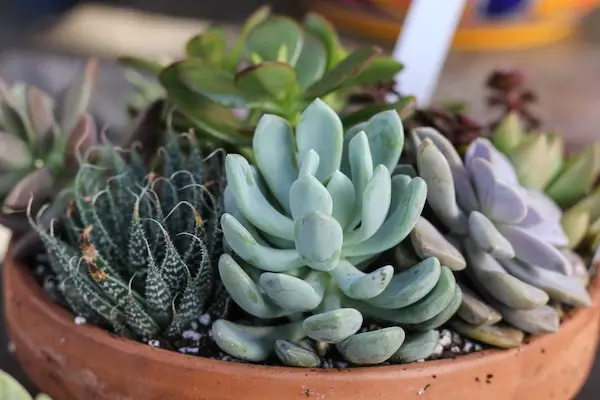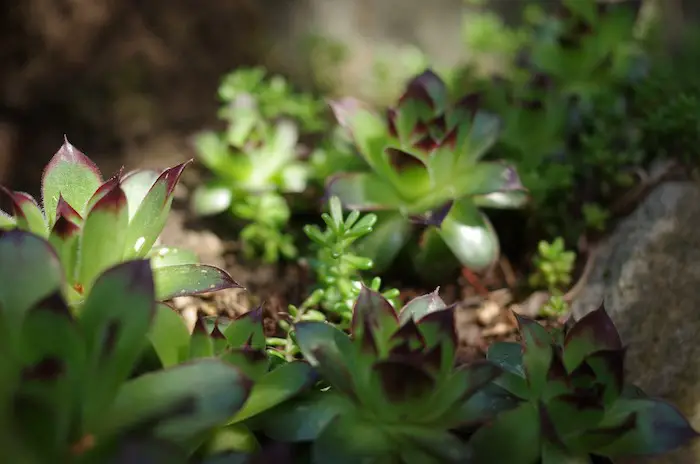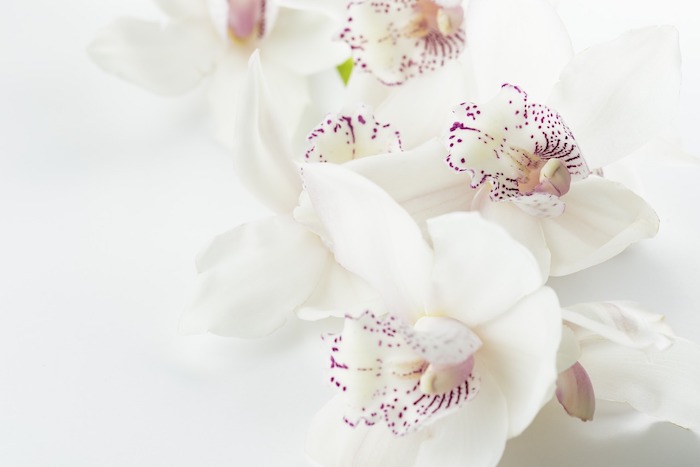Soft velvety leaves, breathtaking flower-like structures, perfect indoor plants, what’s not to love about succulents. But, do you know all that beauty and pride associated with healthy and happy succulents in the garden or inside the house comes with a lot of effort and care.
Known for their ability to survive in arid conditions, succulents are usually associated with a desert climate. However, it’s a myth that these plants need bright sunlight all day. Growing succulents at home is tricky because you need to be careful about the amount of light it receives.
Beginners often ask me ‘how much light do succulents need’. Well, most succulent varieties need at least 4-8 hours of direct sunlight, whether placed outdoors or on a window sill. We suggest morning light (especially for smaller plants) because it is softer than the harsh afternoon sun which may cause sunburn to the delicate leaves.
If you are growing succulents indoors and direct light is not an option, make sure it gets at least 6 hours of indirect sunlight. If you live in an apartment and do not get direct morning light, we suggest providing a filtered or indirect light in the afternoon. The same holds true for summer seasons in regions that have hot climates.
Bear in mind that lack of enough light and too much direct sun, both are detrimental to the health of your succulents. If your office or apartment does not get enough sunlight, place the succulents in the brightest area or brightest window.
The Ideal Light Condition For Succulents
Most succulent varieties are very particular about getting at least 4-8 hours of direct or 6 hours of indirect sunlight every day. While some species of the plant are really picky, there are a few that can grow well even in the low light or indirect light.
The ideal condition for growing succulents is to keep them in a well-ventilated and cool greenhouse, in a bright and sunny spot of the garden throughout the year. If your part of the world does not get enough sunshine, use a grow-light (fluorescent tube light or LED bulb) to supplement the light levels.
When growing indoors, place the pots on the west or the south-facing windowsill in most seasons, and on an east-facing window in intense summer. Here’s some information to help you figure out the intensities of light coming through windows:
East Facing Windows
They are ideal for succulents as these spots get abundant amount of early morning sun. Although the light is not too intense or strong, they are perfect for succulents that prefer softer direct light than the harsh afternoon rays.
West Facing Windows
They give you plenty of afternoon and evening sunshine. While the sun-loving plants can thrive well in the west-facing windows, the rays tend to be too hot in summer. You must need to relocate the succulents to avoid stress.
North Facing Windows
They receive less light as they are shaded from direct sunlight. As the light condition is weakest in these spots, they are most suited for the shade-loving plants. Please note that they are not suitable for most plants in colder months.
South Facing Windows
The south-facing windows provide the brightest and most intense sunlight for optimum growth of succulents. This is the perfect condition for the sun-loving plants that require direct and bright light throughout the day.
Varied Light Requirements Of Different Types Of Succulents

With more than 40 different species, the succulents are an assorted bunch, so it’s difficult to group them all under one umbrella. While there are some succulents that require absorbing a lot of direct and strong sunlight, there are others who need moderate light or very low light conditions.
Outdoor Succulents – Full-Sun
Outdoor succulents are typically the ones that grow in the garden or greenhouse. The full-sun varieties are the ones that love soaking a lot of sun light, sometimes more than 8 hours a day. Examples are desert cacti. These plants may get brightly colored when placed outdoors but they don’t do well as house plants.
These succulent varieties are grown outdoors in the sunny and warmer months. When the temperatures drop below 5 C in winter months, they are kept indoors in the sunniest spot of the house. As the spring comes, expose them gradually to more direct sunlight before keeping outdoors.
- Agaves
- Aeoniums
- Hens and chicks
- Most aloes
- Most cacti
- Sedums
- Sticks on fire
- Moonstone
- Paddle plant
Outdoor Succulents – Shade
The succulent varieties that thrive even with less than eight hours of direct sunlight or prefer filtered or indirect sunlight belong to this category. Even though these plants grow in low light conditions, these can’t do well as houseplants because they require a full spectrum of light that’s only available outside.
- Aloe vera
- Aeoniums
- Flaming Katy
- Gasteraloes
- Fairy crassula
- Jade plant
- Haworthias
- Night-blooming cereus
- Rosary Vine
- String of pearls
Direct Light Indoor- Succulents
These species of succulents do not require a full spectrum of direct outdoor sunlight but they still need a good amount of light. The healthy indoor succulents are mostly green in color because of their highly efficient photosynthesis.
These plants thrive well when kept in a warm and sunny spot on the window sill, or any other area of the house that gets direct sunlight for at least 3-4 hours a day. If you are located in a lower latitude region, the afternoon sunlight may be harsh so make sure you protect your plant with a screen.
- Agaves
- Parodias
- Mytrillocactus
- Pincushion cactus
- Aloes
- Bunny ears cactus
- Spider cactus
- Burro’s tail
- Ponytail palm
- Golden rat tail
- Tiger jaws
- Crown of thorns
Indirect Light Indoor- Succulents
These succulents are slow growers and easy to take care, hence they make the perfect houseplants for those who forget to water or check plant conditions. You just need to keep them in a happy place that gets bright morning light or filtered indirect afternoon light.
- Aloe vera
- Snake plant
- Zebra plant
- Gasterias
- Flaming Katy
- Gasteraloes
- Christmas cactus
- Panda plant
Grow Light For Succulents
Beginners often wonder whether or not they need to invest in grow lights for their indoor succulents. If yes, what is the ideal temperature to be maintained, and so on. So, let’s start with the situation when grow lights are needed.
As you know succulents are sun-loving plants that love to bathe in an abundant amount of direct or indirect sunlight. In the winter season, when the day gets shorter and there’s not enough sunlight, the grow lights are a good option to save them from fading color and etiolation (described below).
The two most common types of grow lights available in the market for succulents are Fluorescent tubes and LED bulbs. The fluorescent tubes come in all shapes and sizes, and the most popular options are T5, T8, and T12. They provide a full spectrum of red to ultraviolet light.
The LED grow lights are extremely powerful as they provide the succulents with the required wavelength of light. They provide a narrow spectrum of lights to the plants, and this helps in saving energy. Thus, LEDs are cheaper, and in some cases, more efficient than the fluorescent tubes.
Here are a few tips to help you make the best use of grow lights for succulents:
- Keep the tube lights or bulbs 6-12 inches away from the succulents. In the case of LED light, we suggest a distance of 18 – 24 inches.
- You don’t need to have the grow lights switched on at all times. It’s advisable to give them a break to allow them to respire. The ideal solution is to let the plant stay in light conditions for 12-14 hours per day.
- Make sure the plants do not sit in one angle or one direction of the light source. Instead, rotate them so that each side gets an equal amount of light.
- When you bring the outdoor succulents indoor during winter, keep a check on them and adjust the light based on their requirements.
- For succulents to carry out the process of photosynthesis indoors with the help of grow lights, you need light sources that are capable of emitting at least 2,000 lumens per sq foot.
Signs That Indicate Succulents Are Not Getting Enough Lights

Plants are living creatures and they communicate with you in so many ways. It’s upon you to pick the signs and signals that your succulents are giving you. If it’s getting too much light and not feeling good about it, the plant will let you know by visible changes. The same is true when your plant is not getting enough sunlight.
If you are a beginner at growing succulents, here are some tell-a-tale signs you must carefully look into to ensure that your plants are not getting scorched or deprived of light. Read on to find the various conditions and how to cope up with them:
Tall stems and sparse leaves
This condition when the stems become elongated to stretch out towards the light sources is known as etiolation. It is one of the most common signs that tell your succulents are deprived of enough direct sunlight. Instead of the usual compact flower form, the stems will look disproportionately taller and the leaves will be spaced farther.
This happens because the plant grows upwards in search of light instead of putting its energy in lateral growth. It is a normal occurrence in the succulents that grow low in the wild under shady rocks or taller plants. Although the plant looks off, this condition does not kill them although they do get weaker.
How to fix it
So, if you see the succulents growing taller, move them to a brighter place where they can get sun light for 3-6 hours. Although you can’t reverse the elongated stems, the plant will soon grow a beautiful Instagram-worthy rosette over it.
Rosettes growing flat
Different species of succulents exhibit different signs and symptoms when they are deprived of enough light. While some grow lanky or tall searching for lights, others might grow abnormally. For example, aloe vera plants look perky and happy in summer with flower-like leaves.
Leave the same plant outside in winter and the lovely rosette will turn flat and look sad. It’s a sign when the plant flattens out to increase the exposure of leaves to light. They try to get as much light as possible by increasing the surface area.
How to fix it
If winter is harsh where you live, we would suggest that you bring those plants indoors and use grow lights to ensure that the succulents get enough light. The flattened leaves may recover to some extent if not fully, but they will soon grow normal healthy leaves on the top.
Leaves arching downwards
These signs are commonly seen in Echeverias and Sempervivums species. When the succulents do not get enough sunlight, the lower leaves may start to bend downwards. The reason behind this is again etiolation, but in this case, the leaves grow tall and collapse downwards instead of elongating.
So, if the bottom leaves give you the impression that they are collapsing and unable to bear the weight of abnormal growth, take it as an indication of lack of sunlight. Don’t fret about it because you can easily restore your plant to good health.
How to fix it
While the dropping or arching leaves may not get back to their original shape again, you can grow a new healthy rosette on the top. Change the location of the plant to a place where it gets 3-6 hours of bright light. Alternatively, use grow lights indoors to help it grow normally.
Fading color
Succulents are loved across the world not just for their shape and texture of leaves, but attractive hues (purple, red, green, and pink) that make them a perfect wedding decoration plant. The quality and variety of foliage colors add more beauty to the plants.
One of their virtues is that the leaves will change color when over-exposed to direct light. For example plants like Euphorbia tirucalli and Crassula ovate tend to develop a reddish hue when they get too much light. This is a sign of stress that will not kill your plant but curb its growth in the long run.
A healthy succulent will have bright and glossy leaves to indicate that they are receiving just the right amount of water and light. If the plants appear faded and pale with dull leaves, this indicates they are yearning for some bright light.
How to fix it
If you notice signs of stress in succulents, it means they need some extra care. Move it to a different location where it gets indirect light instead of direct sun rays. So, check to ensure that the plant is not under-watered. With good care, the signs of stress may soon disappear leaving your plant looking healthier and happier.
Disappearing marks and hues
Just like the leaves in succulents get stress marks when overexposed to sunlight, some natural leaf markings, shades, or accents may fade due to lack of sufficient light. For example, the Haworthia pumilla comes with lovely white markings on the outside, but if you keep the plant in a shaded place for too long, these markings disappear.
How to fix it
Similarly, colored succulents may lose their shades and turn plain green if they do not get adequate light. If you keep them in a sunny position, the plants may again restore to their original hues and grow back the markings on their leaves.
Related Questions
Can you prevent etiolated succulents from occurring
If you want your succulents to stay healthy and happy at all times, we suggest that you ensure that they get bright light from the beginning. Keep a check on them so that you can adjust the light if you notice them getting leggy.
Alternatively, if you have a succulent for a long time, it will tend to grow taller and longer inevitably, unless you behead the plant to stimulate new and fresh growth.
How to prevent physical damage
Besides sunburns, physical damage is another common cause for stress in succulents. The plants may get damaged due to insect and animal bites. You should also be careful about not dropping the plants while moving them or else this can physically damage the delicate stems and leaves.
How to tell that your succulents are sunburnt
If the succulents are getting too much direct and intense light than needed, you will soon see clear signs of sunburn. These include black or brown leaves, shriveled rosettes, or calluses. The best method to fix the sunburn is to move your plants to another place that gets less light. While the sun burns may not heal, the other parts of the plant will get healthier.
Do succulents have a dormant phase?
Yes, like most other plants, the succulents also have a dormant phase during which that plant will stop growing in the usual rate. If the leaves were fleshy earlier, they tend to become brown or yellow. They might drop downwards or get limpy on the sides. In some varieties, the rosettes may get smaller and this is normal.
See Also: 19 Tips To Keep Succulents Alive



